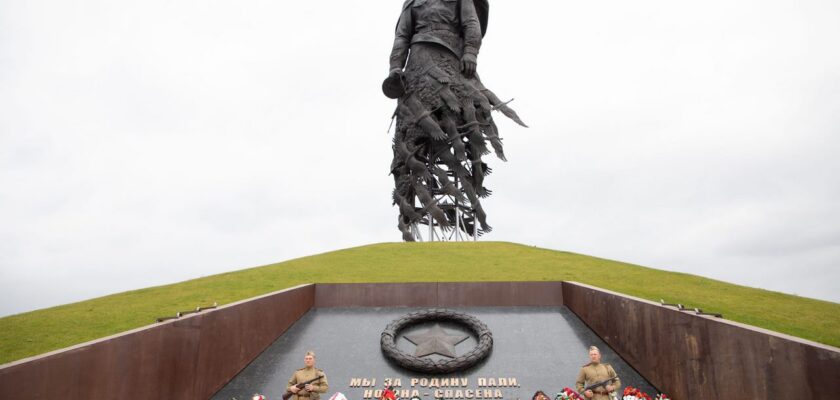Rzhev Memorial to the Soviet Soldier
Rzhev Memorial to the Soviet Soldier is a relatively new attraction, built mostly with funds from the city’s residents. The memorial complex is dedicated to the memory of fallen soldiers who defended Rzhev during World War II. It is engraved with 17,000 names of soldiers who died in battle. It becomes very heavy on the soul when you realize how many people died in those years, fearlessly and courageously defending their homeland. But at the same time you feel proud of the immortal feat of ancestors, without which we simply would not be in this world …
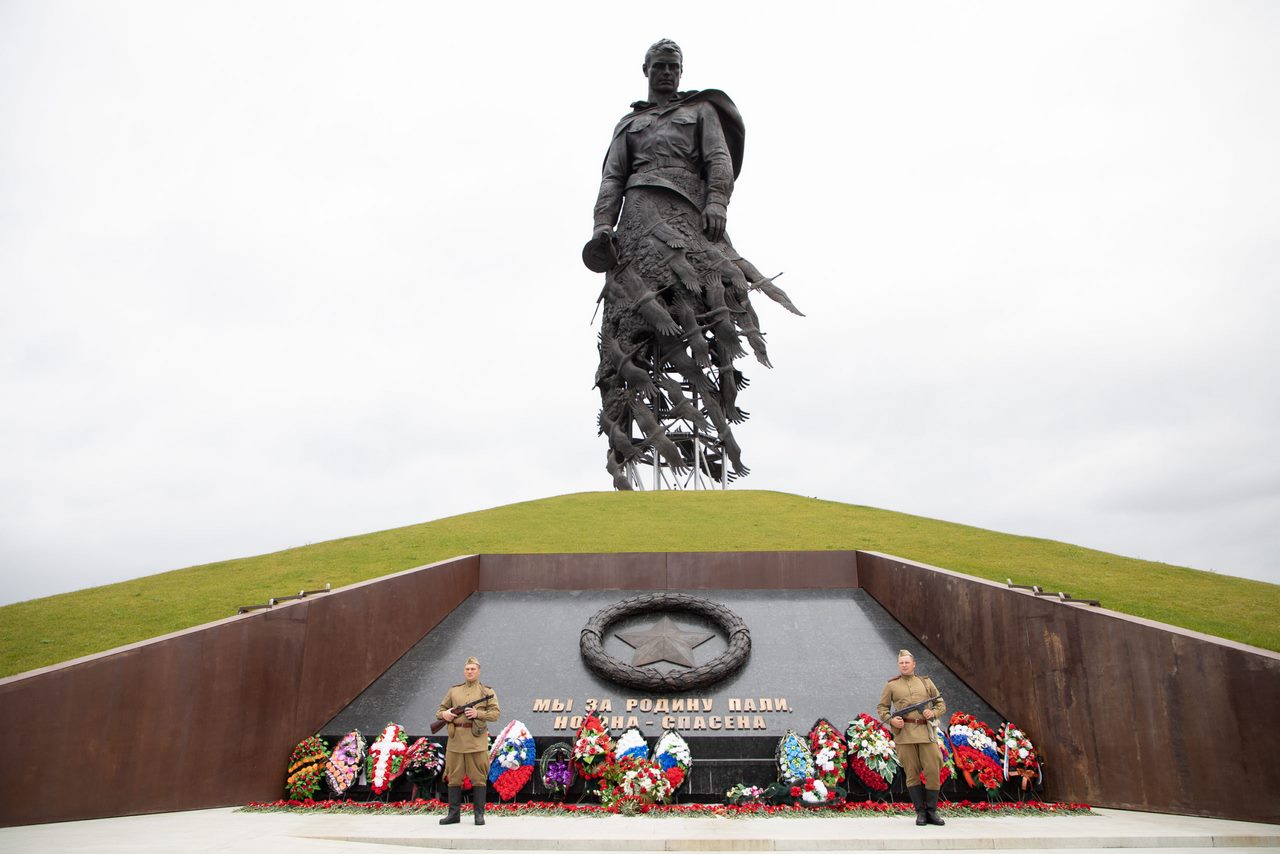
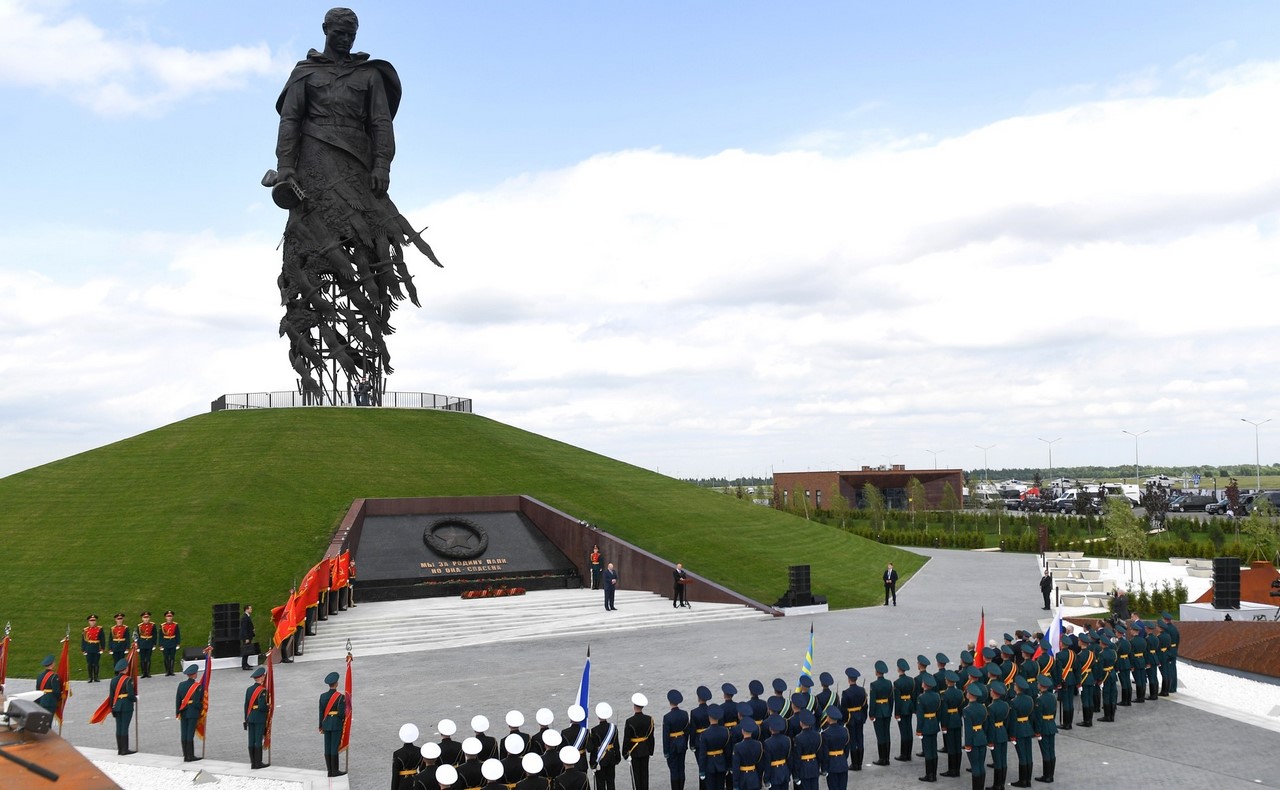
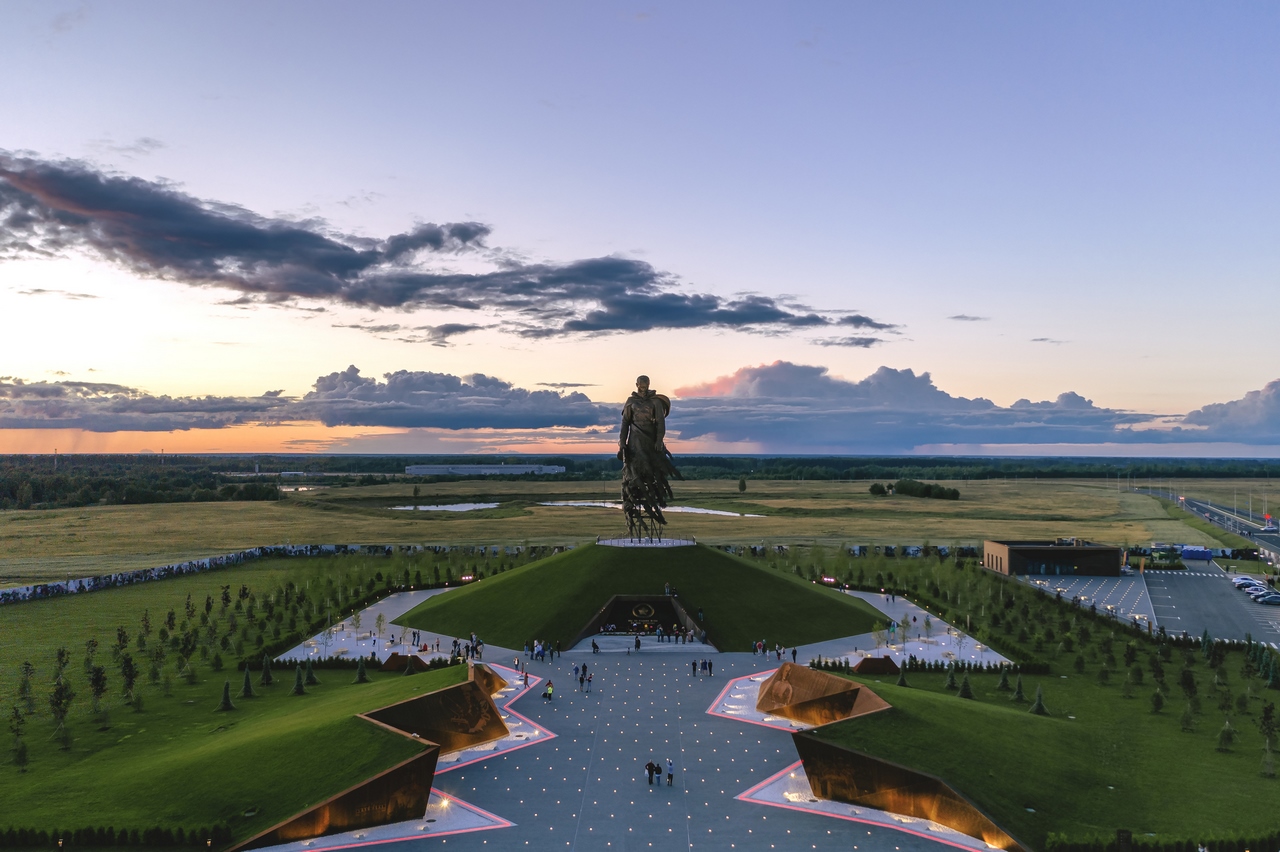
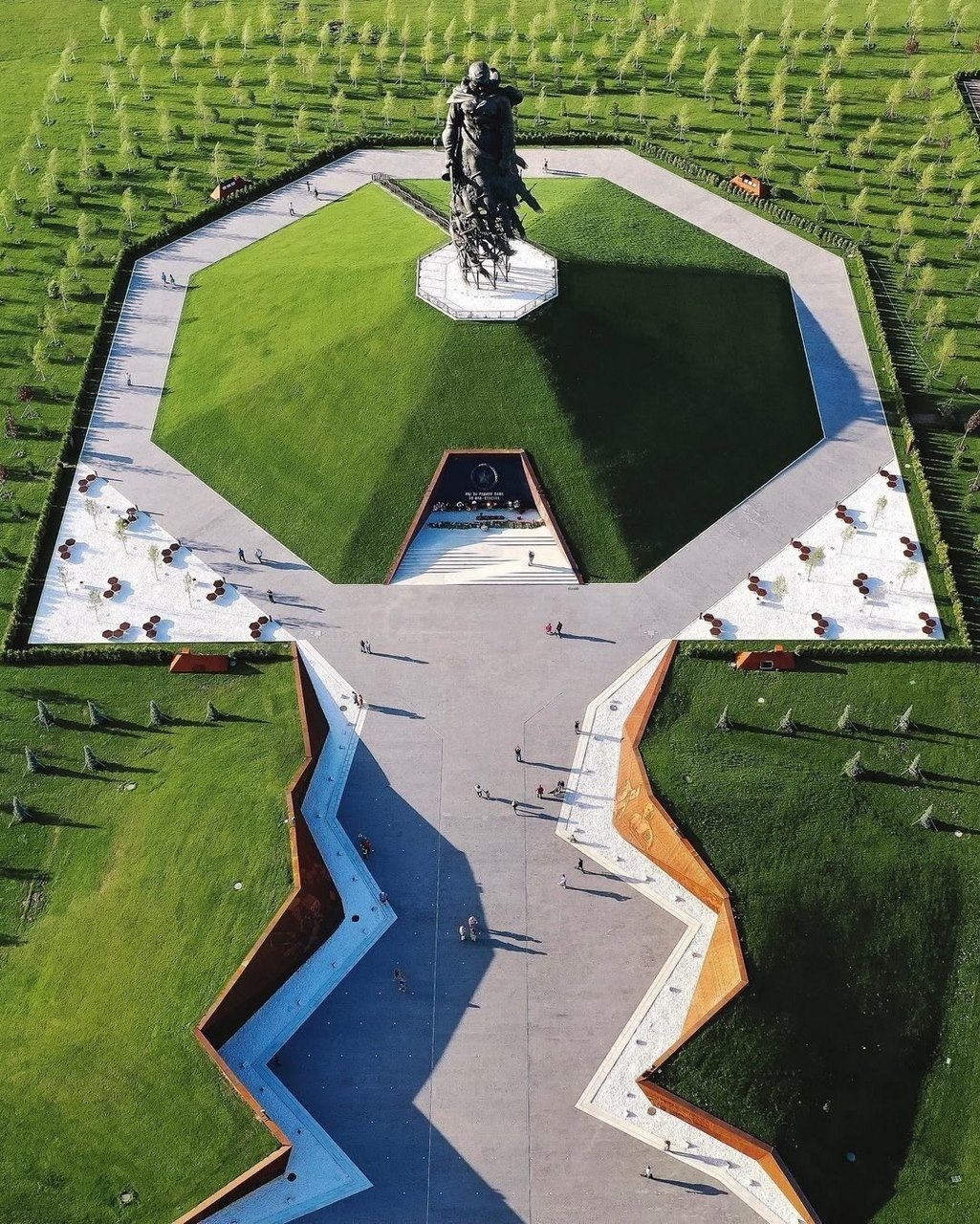
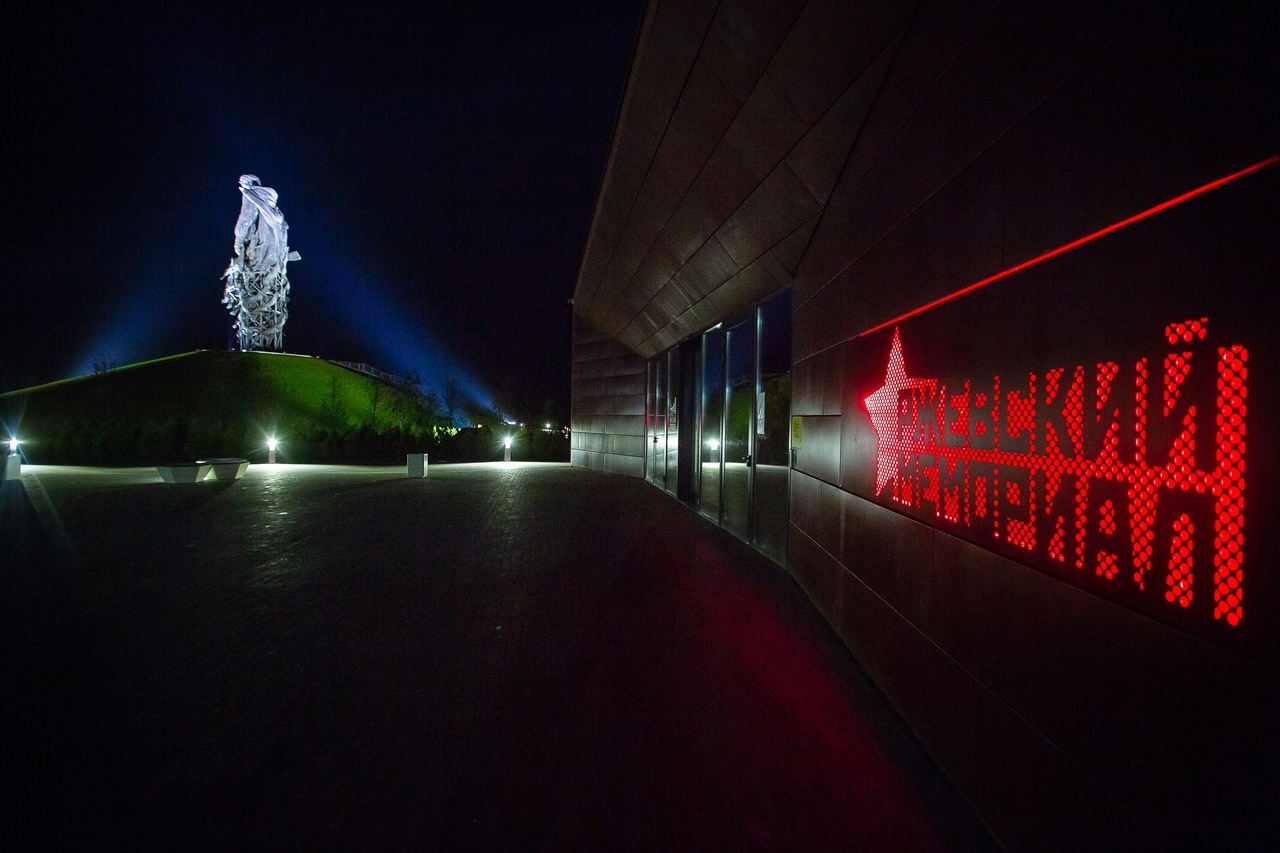
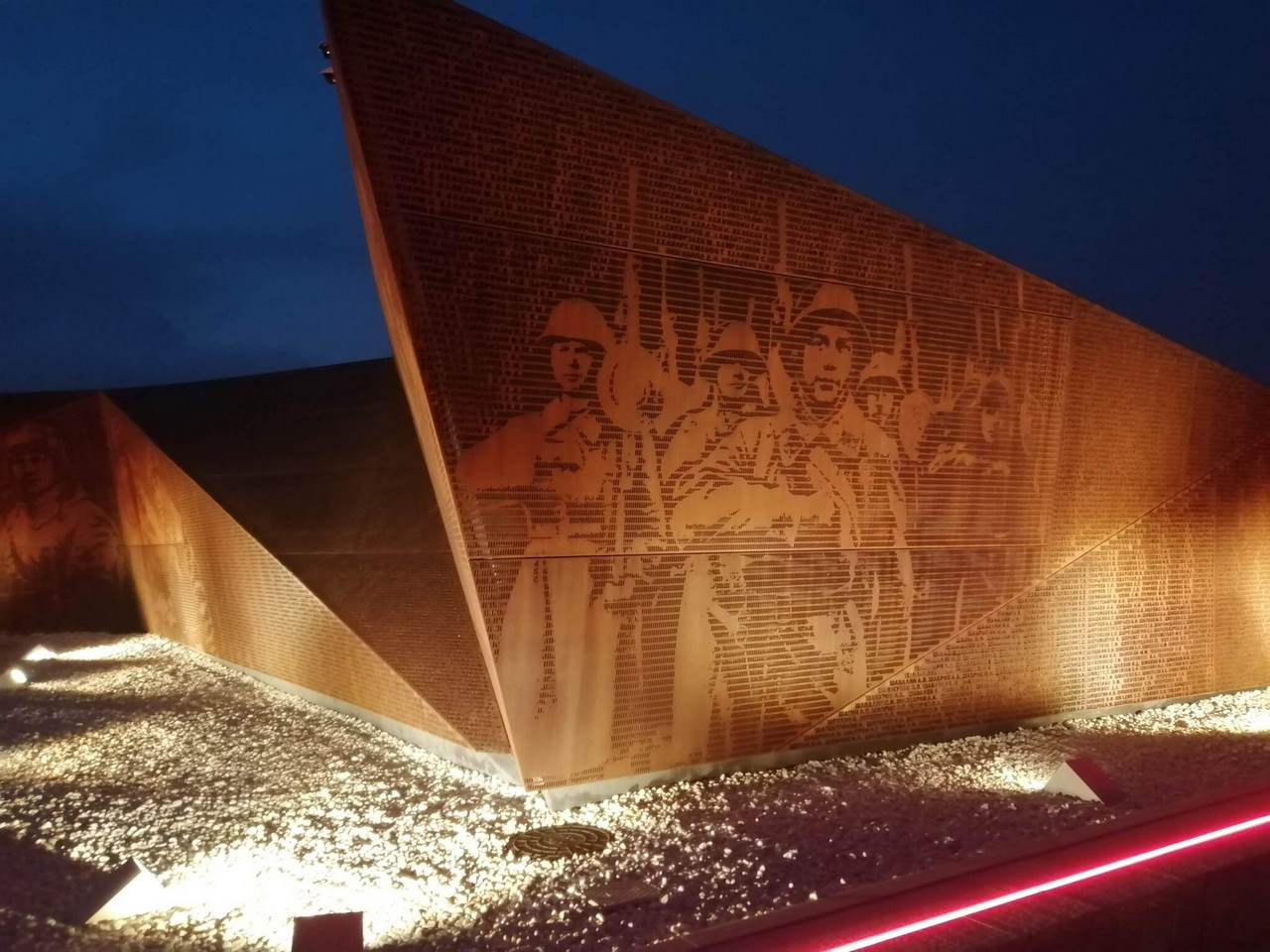
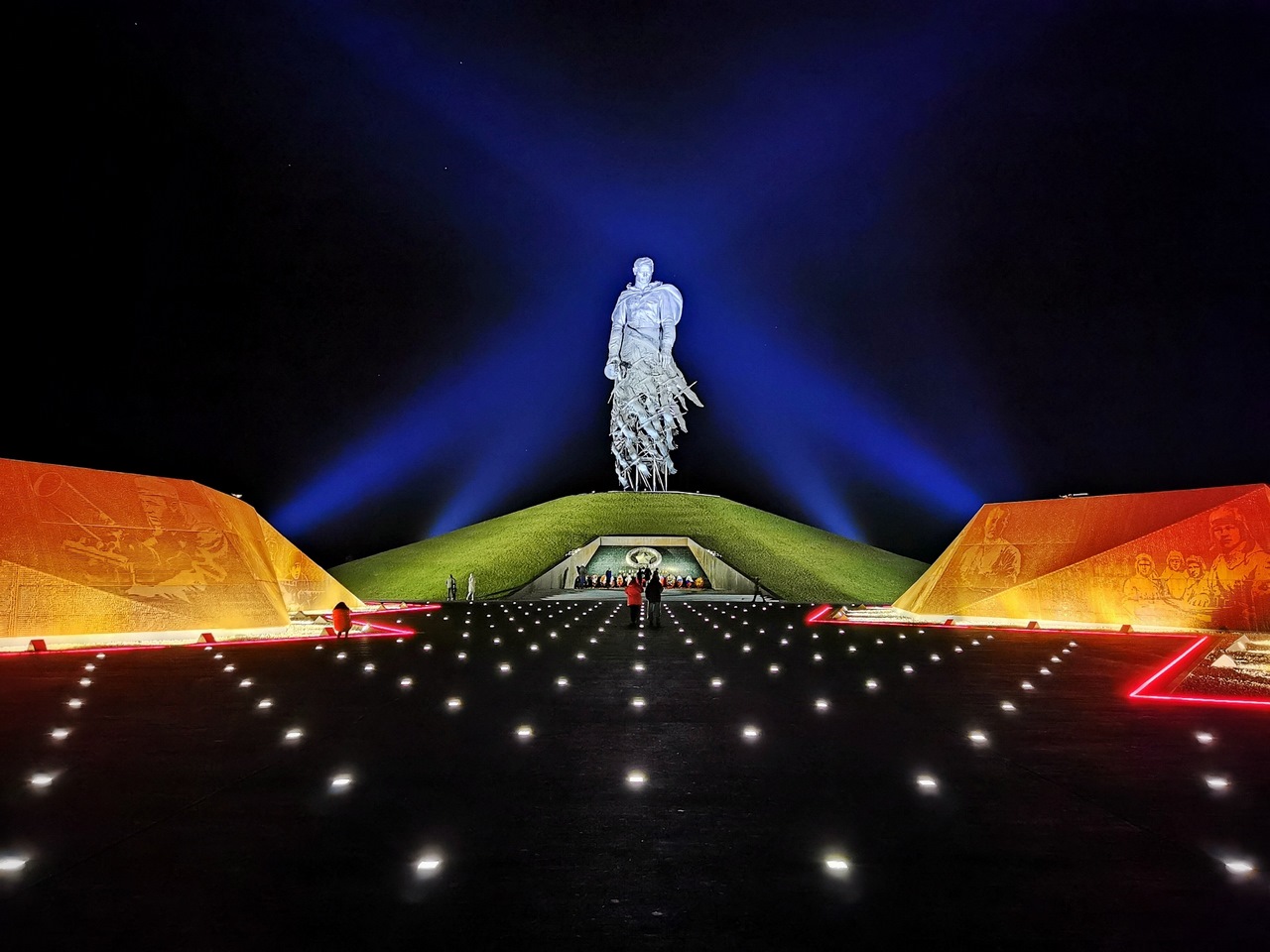
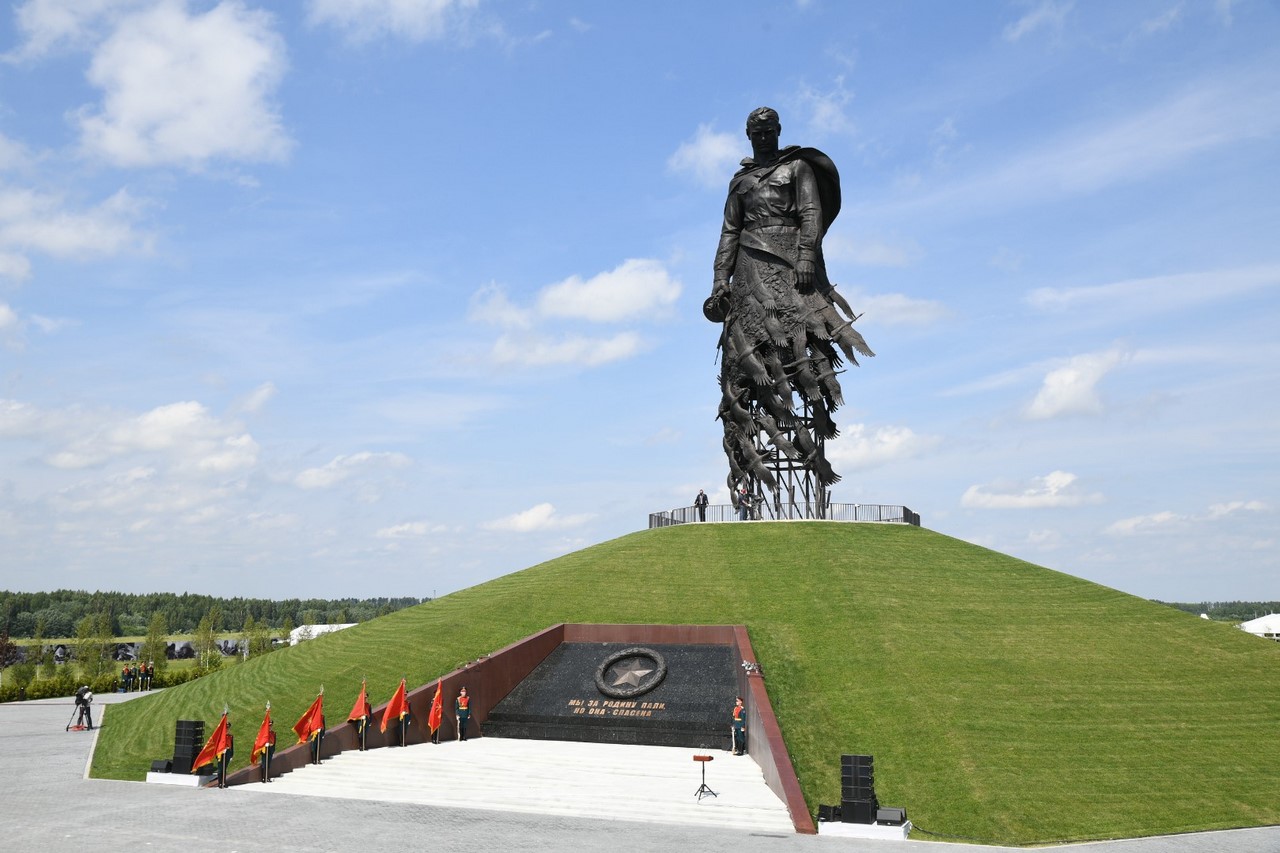
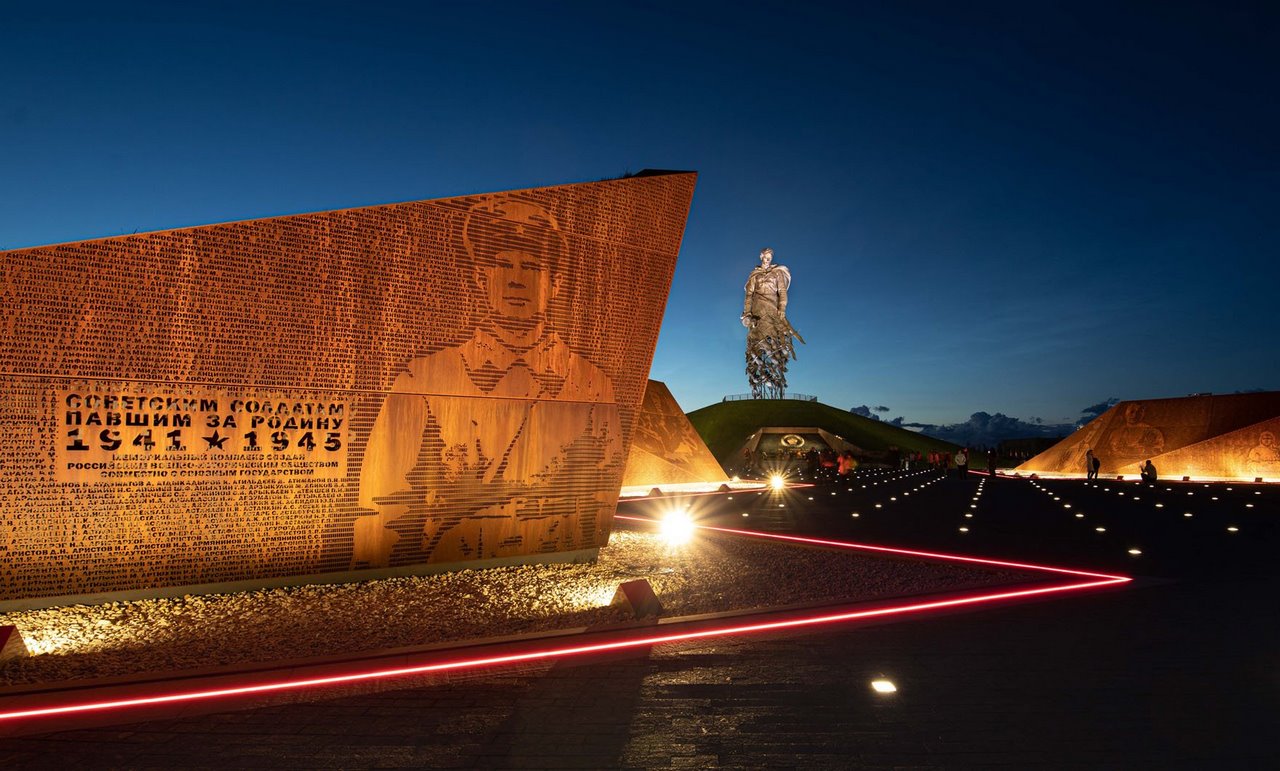
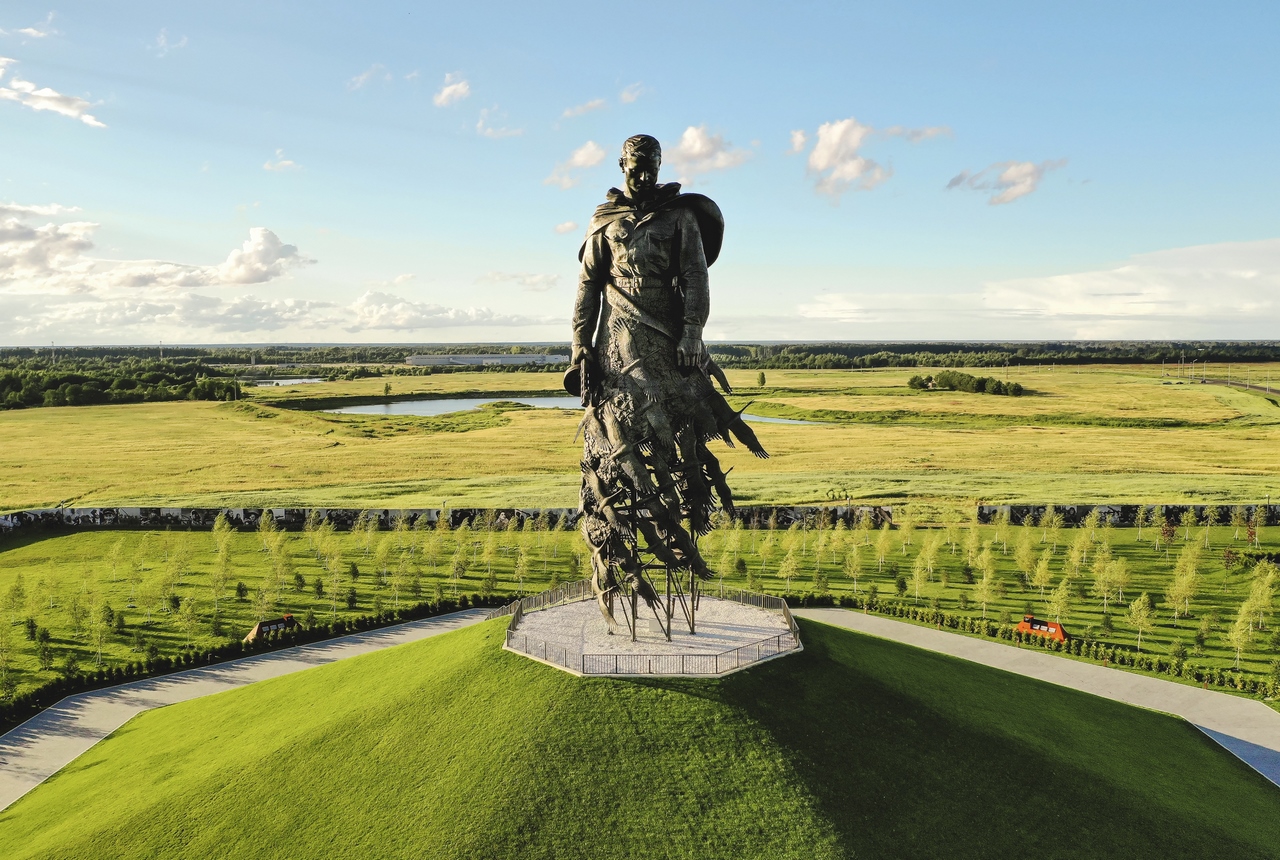
Video: Rzhev memorial to the Soviet soldier
ContentsHighlights
https://trevaladvisor.com/%” alt=””/>‘ Rzhevsk Memorialhttps://trevaladvisor.com/img%img/Rzhevskij-memorial-Sovetskomu-soldatureterte/Rzhevskiy-memorial-3.jpg” alt=””/>‘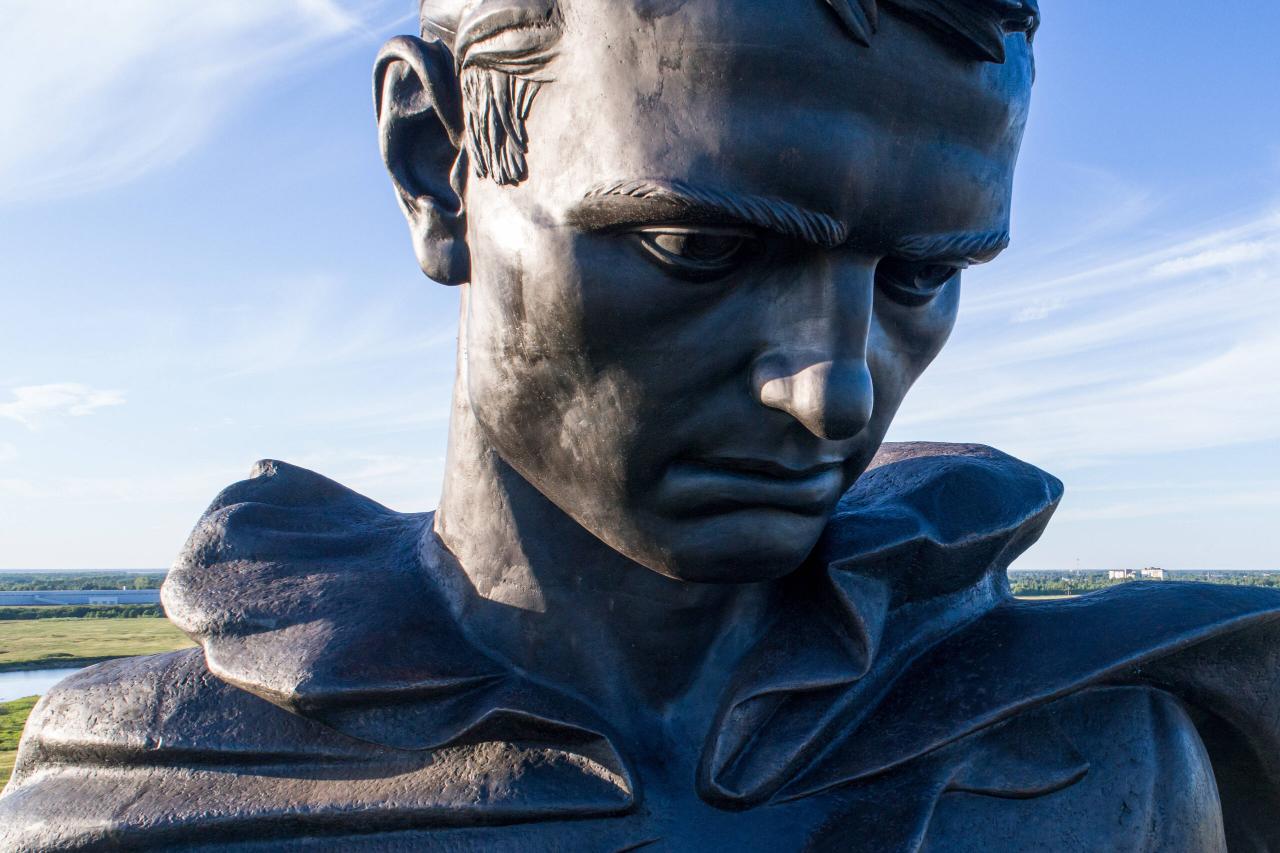
The museum and exhibition pavilion is located on the east side of the hill. The building has modern multimedia equipment, so visitors can listen to stories and memories of the participants of the Battle of Rzhev, look at their photos and letters from the front. The glass floor is the main feature of the pavilion. Through it you can look at various artifacts that were found by special search expeditions at the battle sites: helmets, shells, grenades, shell casings, a soldier’s gas mask pierced by 10 bullets at the same time, and others.
.
In the southern, front part of the mound cut a niche in which you can see a sloping marble slab of black color. In the center of the slab is a bronze bas-relief: a Soviet star with five rays, surrounded by a laurel wreath – a symbol of courage and victory. Under the bas-relief are gilded letters with lines from Alexander Tvardovsky’s famous poem “I was killed near Rzhev”. At the bottom of the plate there is a special step for laying flowers.
.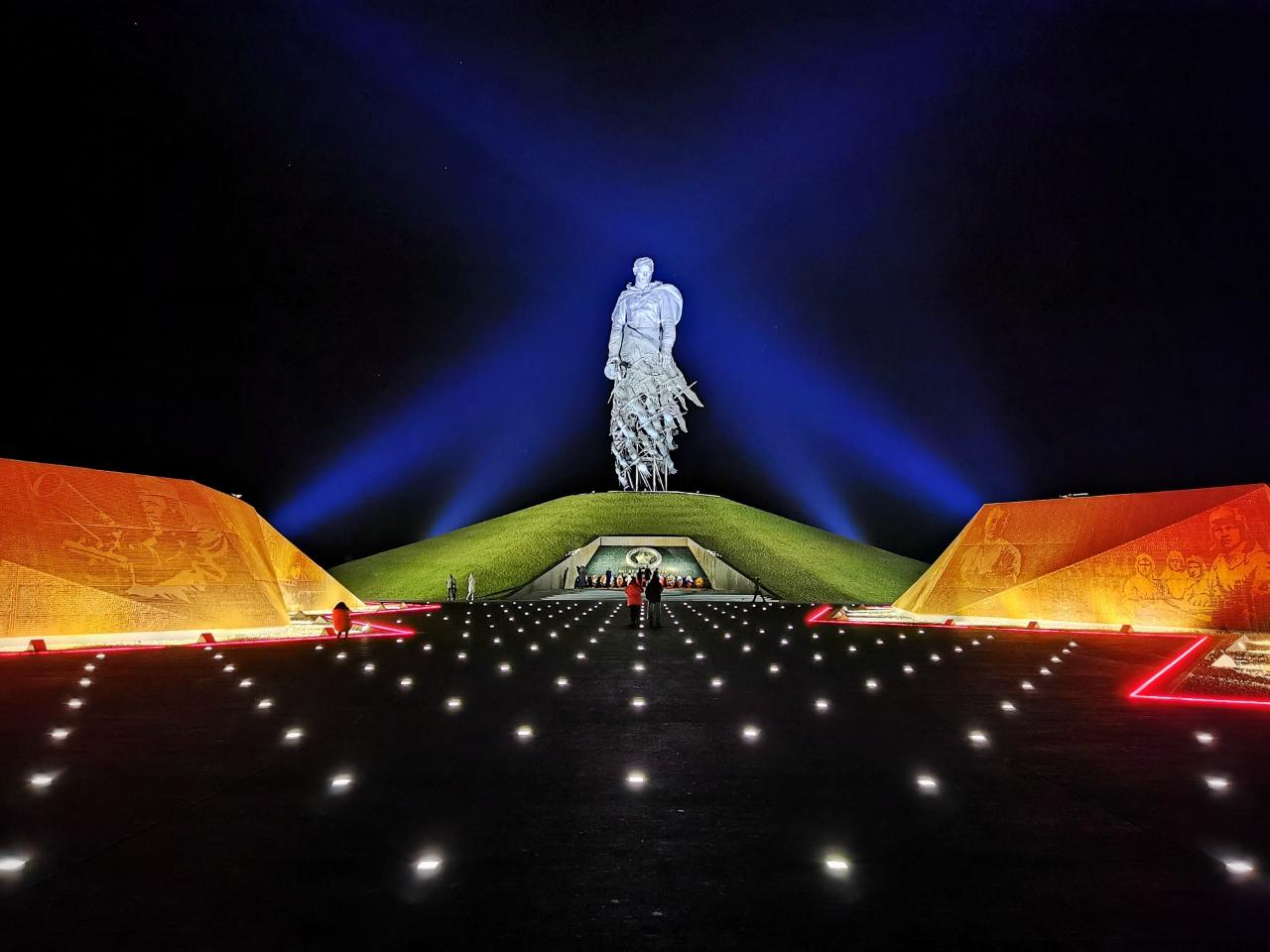
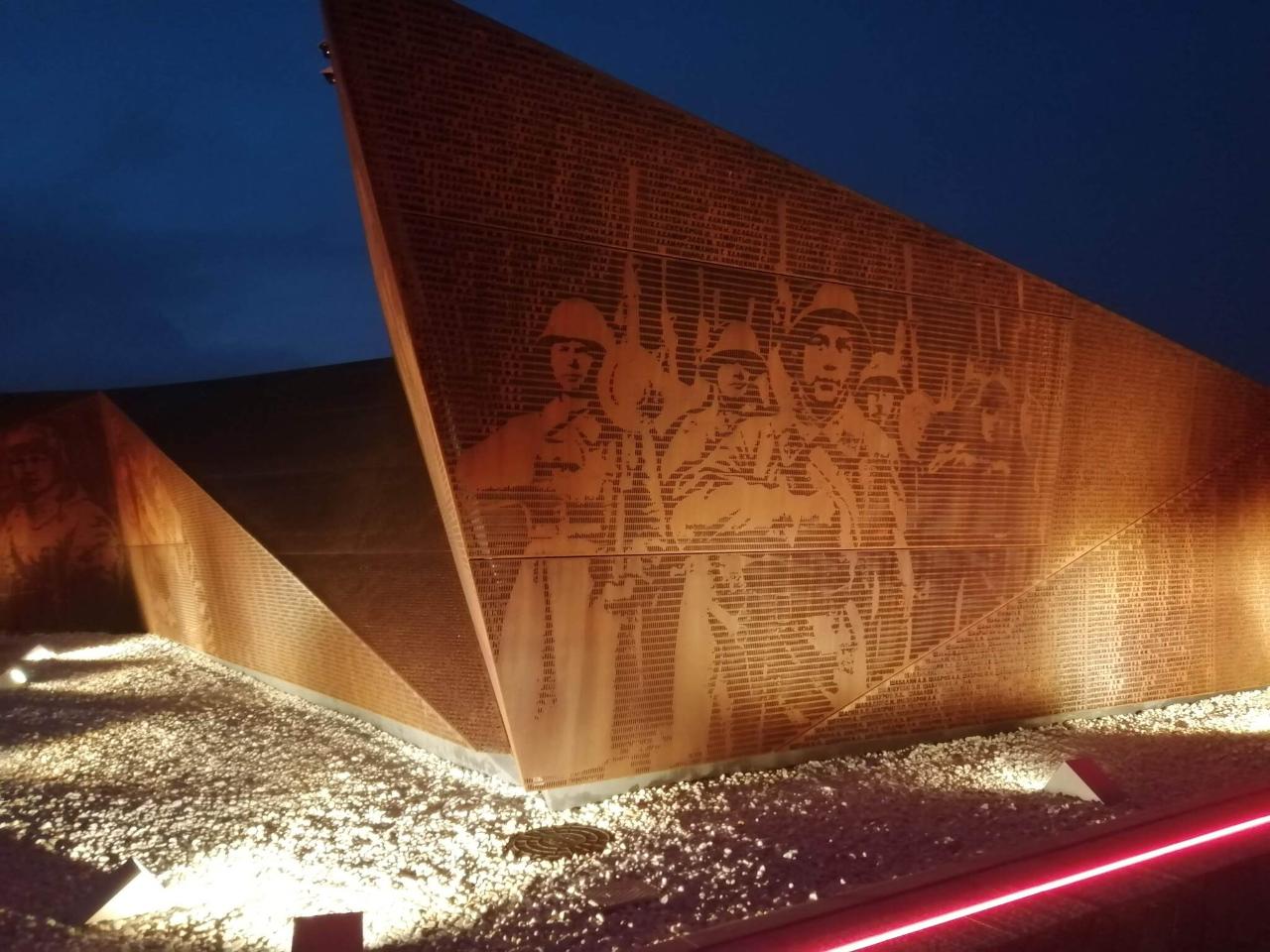
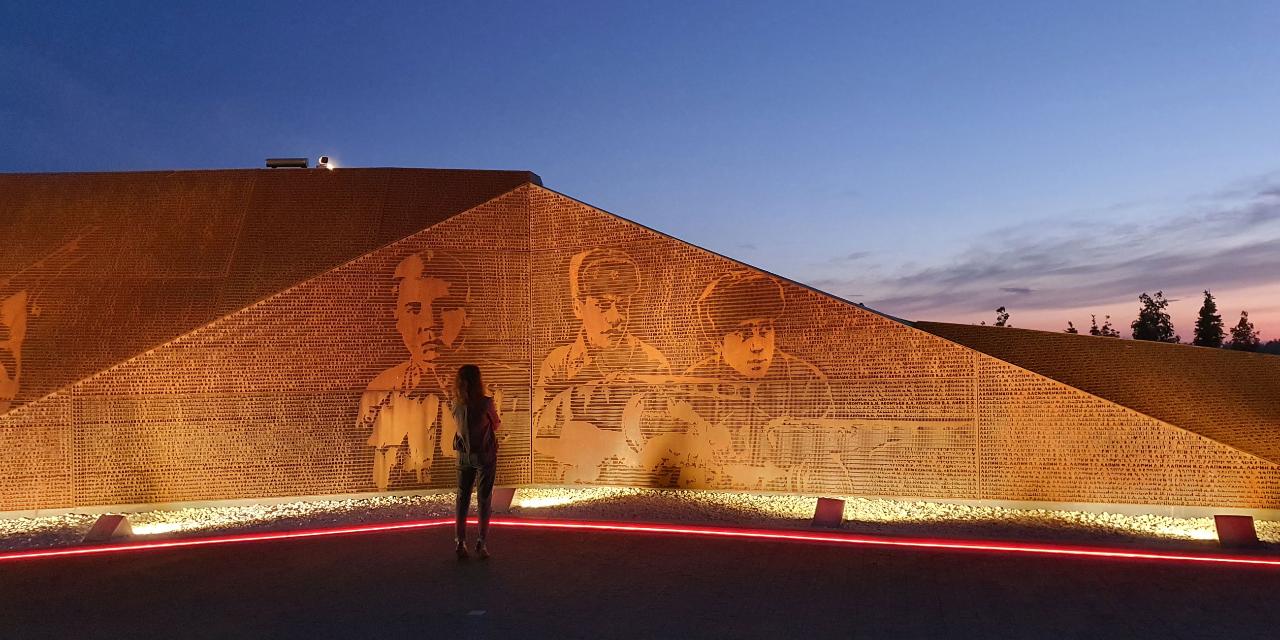
History of the construction of the memorial
The initiative to build the Rzhev Memorial to the Soviet Soldier came from veterans of the Great Patriotic War. In 2017, they addressed a letter to the Committee of the Union State of Russia and Belarus and to the Scouts of the Russian Military Historical Society with a request to prevent the falsification of historical facts about World War II, to improve the level of historical and patriotic education of young people and to immortalize the memory of their fighting comrades on the occasion of the 75th anniversary of the Victory.
.Preparatory stage
After the decision to erect the monument was approved in the summer of 2017, the Russian Military Historical Society organized a creative competition. The Artistic Council of the Russian Military Historical Society received 32 projects for consideration, including those from Moscow, Belgorod, Bryansk, Irkutsk, Klin, Novosibirsk, Taldom and Belarus. The best works of the participants were presented in December 2017. Although the meeting selected the top three prize winners, the jury could not unanimously favor any of them. It was then decided to extend the creative competition for a few more months.
.In May 2018, the commission, which included such well-known personalities as Andrei Belotserkovsky, Vladimir Medinsky and Grigory Rapota, first selected the top three from 19 works, and then determined the winner of the contest. The tandem of sculptor Andrei Korobtsov (Belgorod) and architect Konstantin Fomin (Elektrostal), who took part in the first stage of the contest, managed to win. They performed their work under the general supervision of Andrei Konchalovsky. All other prize-winning participants were given cash prizes.
.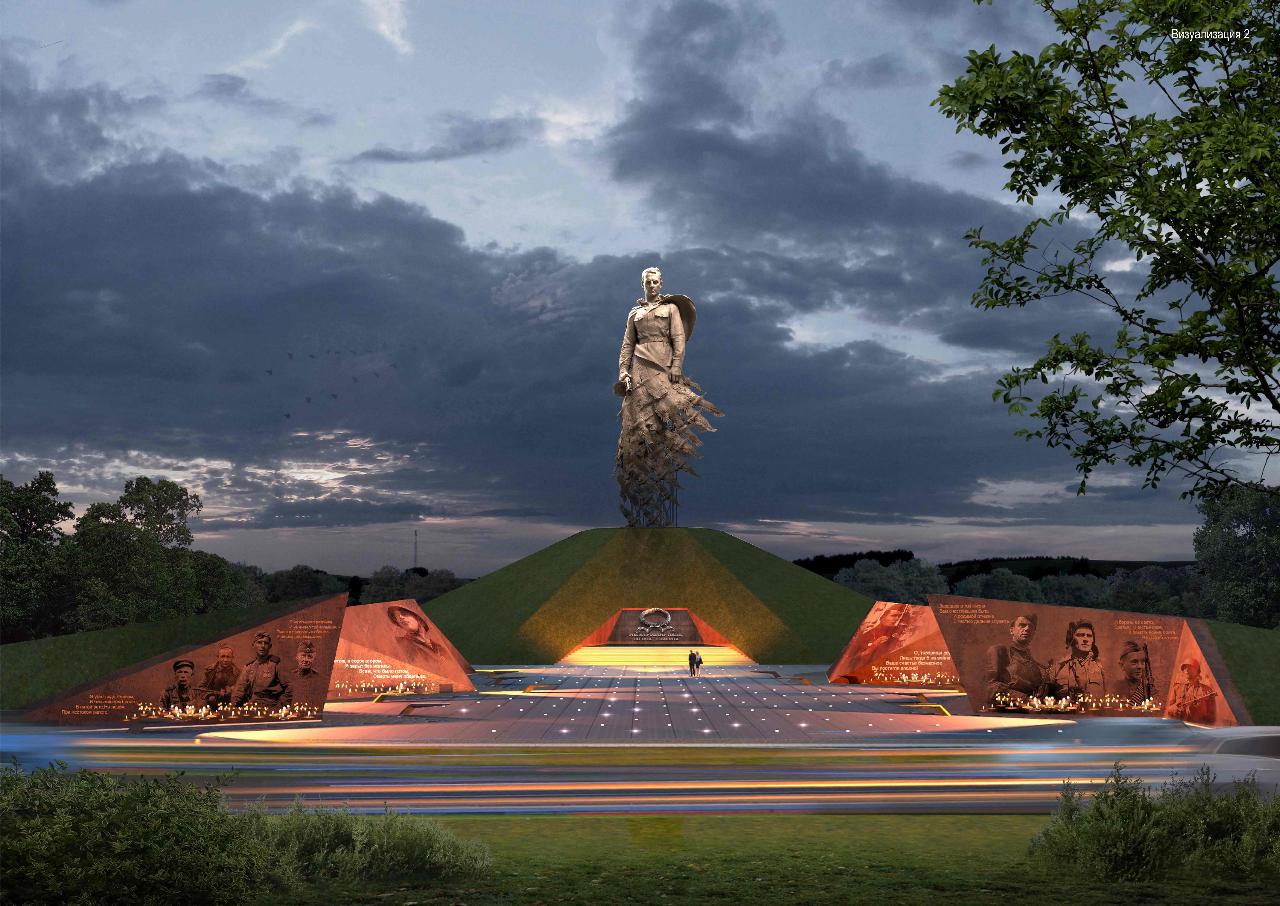
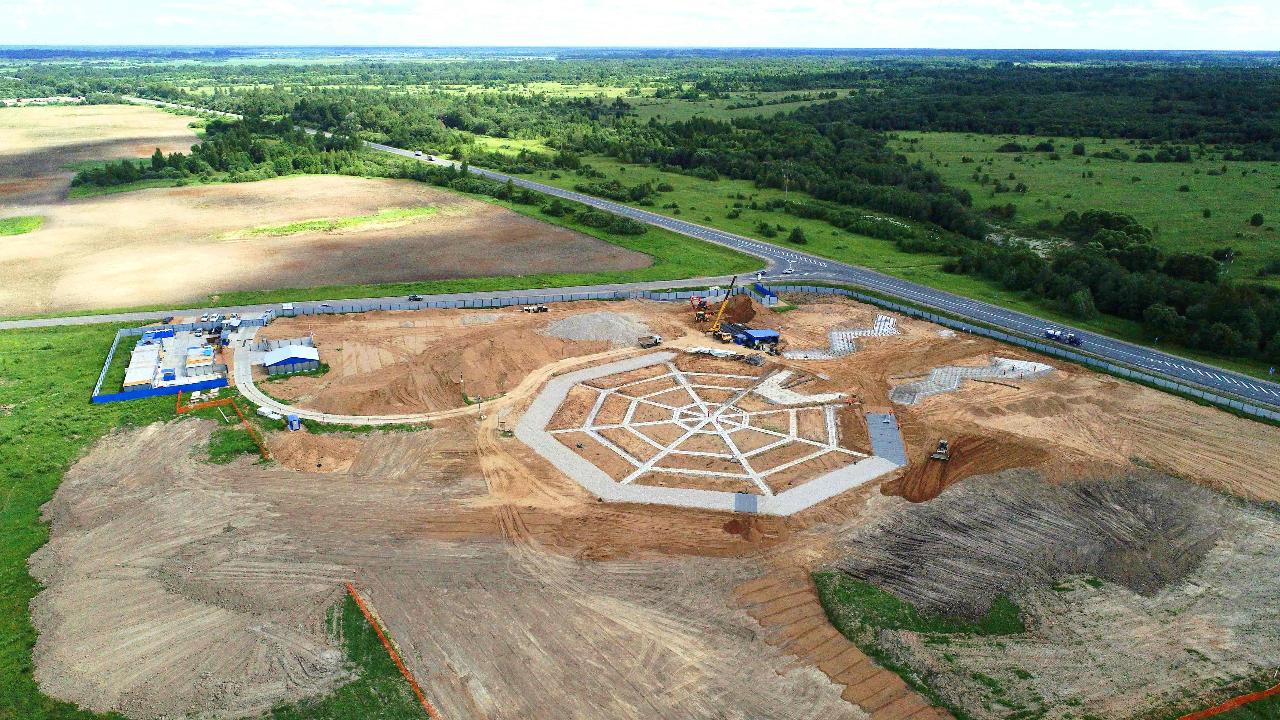
On November 7, 2018, Vladimir Medinsky had a working meeting with Vladimir Putin, who approved the decision to erect a monument to the Soviet Soldier. 5 days later, on November 12, 2018, on the site of the future memorial complex, a foundation stone decorated in the form of a star with five rays with the date: “1942-1943” was installed. On the slab, which retained traces of shrapnel from shells and bullets, was inscribed an inscription stating that a memorial to the Soviet soldier will be established here in memory of those who died near Rzhev.
.In the process of working on the sculpture in the studio of Korobtsov and Fomin, about 80 sketches were developed, thanks to which the masters created a detailed 2.5-meter plaster model of the soldier. Based on this plaster model, a full-scale 100-ton figure was sculpted from blue Cambrian clay.
.
Construction work and casting of the figure
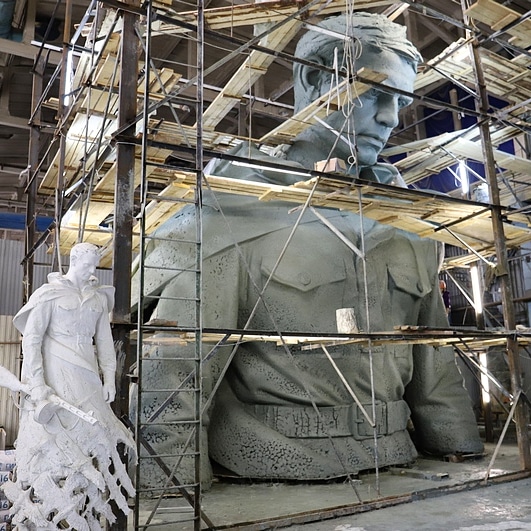
Installation of the sculpture
Fragments of the sculpture began to be brought to the construction site on November 28, 2019. The installation of the future monument was carried out from top to bottom, so first brought the head, and then – shoulders, torso and belt. In parallel, the museum pavilion was being built next to the sculpture, and in St. Petersburg, the production of panels made of 6 by 2.5 m sheets of Corten steel began at the Synergy metalworking plant. Names and photos of the soldiers who died in the battles near Rzhev were laser-cut onto the panels.
.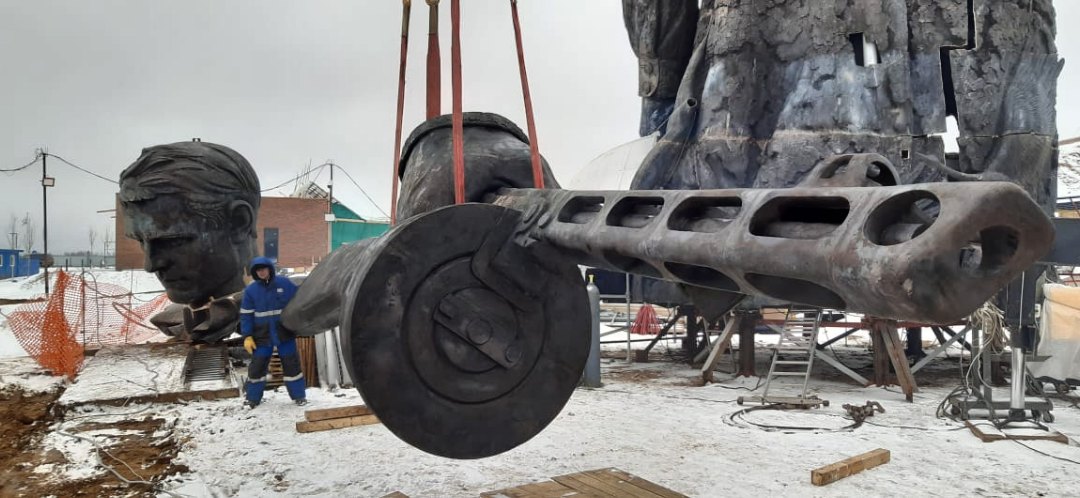
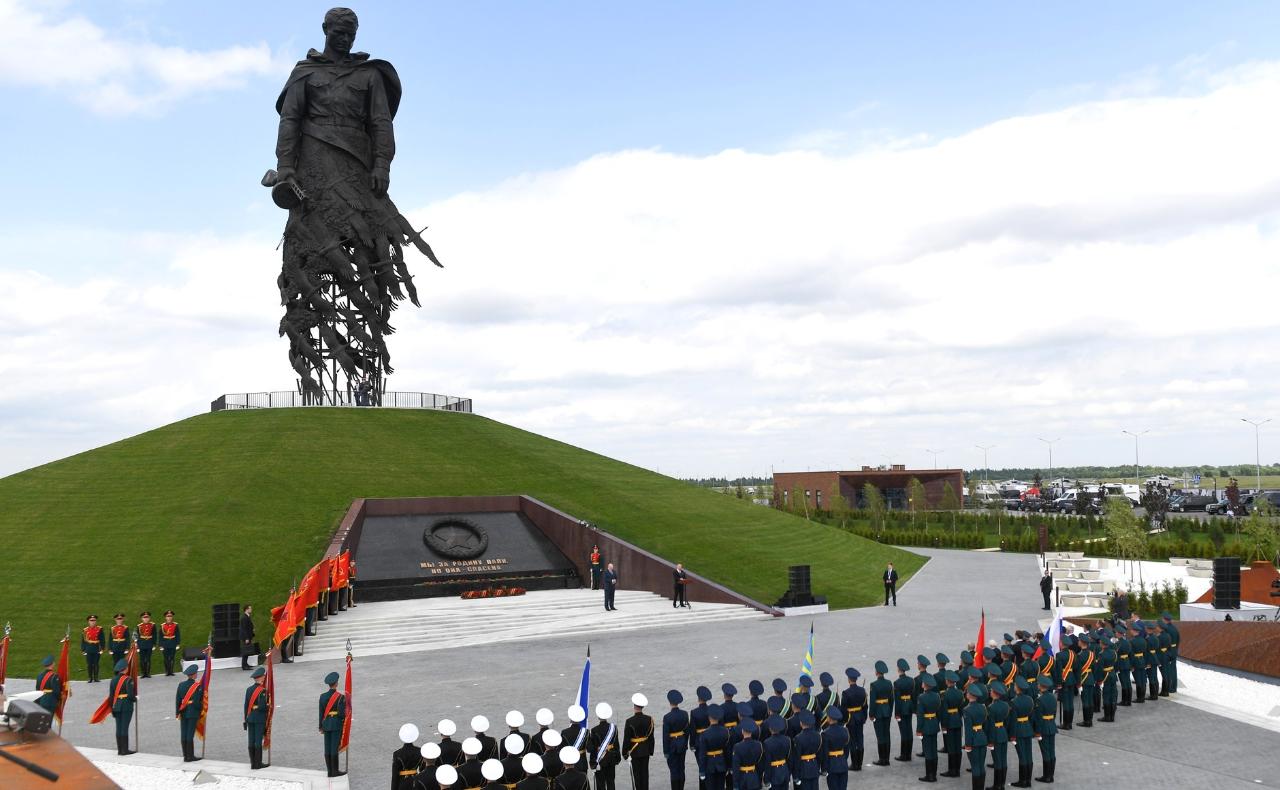
Significance of the Monument to the Soviet Soldier
The Monument to the Soviet Soldier was erected on the site of fierce fighting that took place in 1942-1943. Bloody battles along the perimeter of the Rzhevsko-Vyazemsky protrusion lasted 14 months. The offensive and defensive operations undertaken by the troops of the Western and Kalinin Fronts, which suffered huge losses, were extremely important strategically for changing the course of the war in favor of the Red Army on the entire Soviet-German front.
.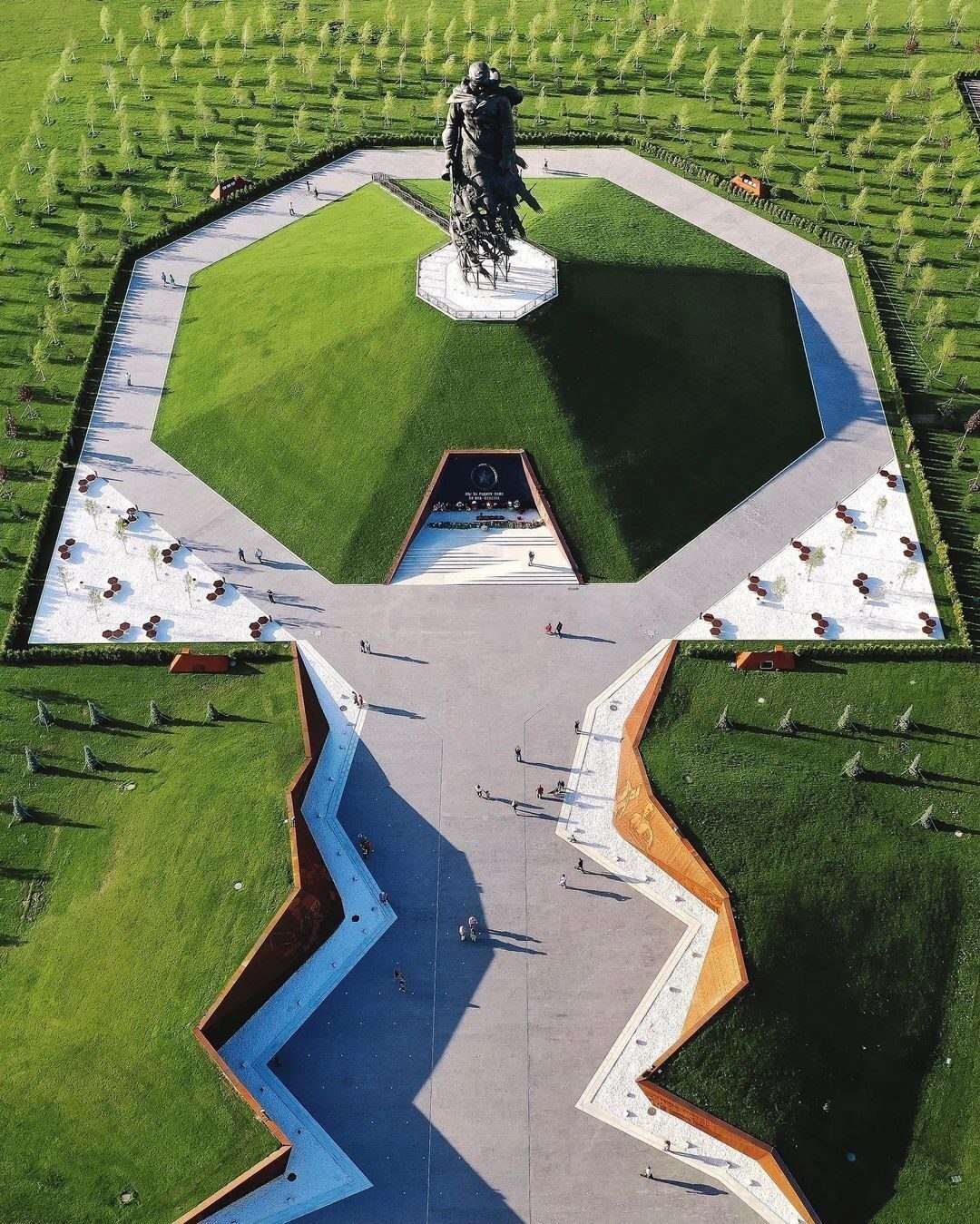
Not so long ago, the battles near Rzhev were almost never mentioned in official historical sources. It was too hard to remember that terrible “Rzhev meat grinder”, as it is sometimes called. Fierce, exhausting and agonizing fighting continued in that area for months. Soldiers fought for every grove, every hill, every square meter of land. It is impossible to think without pain about the losses of the Red Army in those battles. More than 1.3 million people were killed, wounded or missing. This is a horrifying, unthinkable number.
.The significance of this long and bloody battle for the Victory of the Soviet people over Nazism is enormous. The Soviet Army finally made it clear that the enemy will not be able to turn around and again launch an offensive on Moscow; neither will he be able to break and subjugate the people who stood up to defend their homeland. Every time a soldier fell, another rose up after him. The incredible intensity of this battle wore down the enemy, crushed and began to gradually destroy the gigantic war machine of the Third Reich.
.
Step by step, day by day, the battles near Rzhev brought closer the triumphant outcome of the Battle of Stalingrad and the long-awaited breakthrough of the siege of Leningrad, the liberation of Belarus, Ukraine and the Baltic States, the final and critical turning point in the course of the Second World War. We will always remember what a high price the Soviet people paid for the Victory, what a blow the Red Army took upon itself and repelled, where representatives of all Soviet republics and nationalities fought side by side. More than 8.5 million Red Army soldiers never returned home; they died in battle, in captivity or died in hospitals – and this statistic is not yet final.
.
The memorial in Rzhev is another symbol of our common memory, a symbol of our adoration of the great and selfless feat of the hero soldier, the liberator soldier, the victorious soldier, the soldier who saved Europe and the whole world from Nazism. Time has no power over this deed, and it cannot and must not be forgotten, erased or tarnished by lies and falsifications. We will not let that happen.
. The lives destroyed by war will always remain with us as an open wound. As now, the valor and steadfastness of our fathers, grandfathers and great-grandfathers, as well as their endless love and loyalty to their Motherland will serve as an important moral guide for us. We must be worthy of this highest moral standard in our actions and activities today, we must protect and preserve historical truth as a living thread uniting generations both in Russia and abroad.”.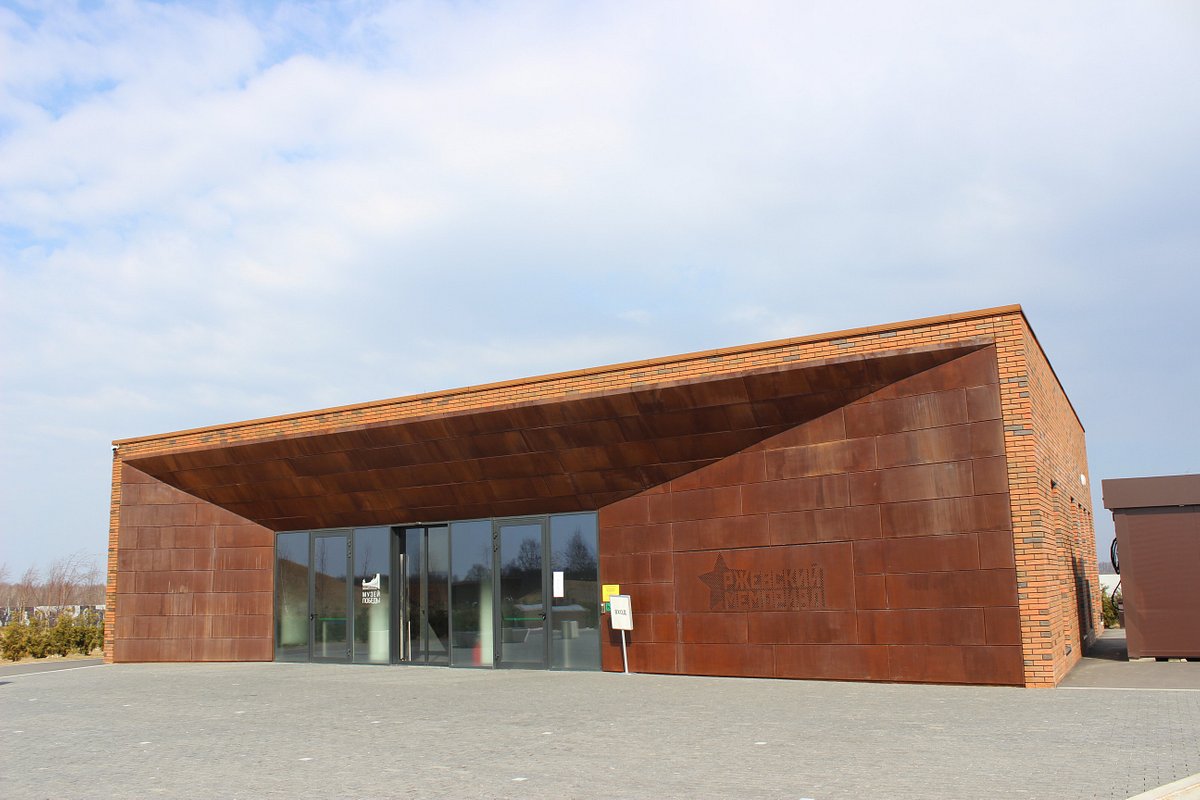
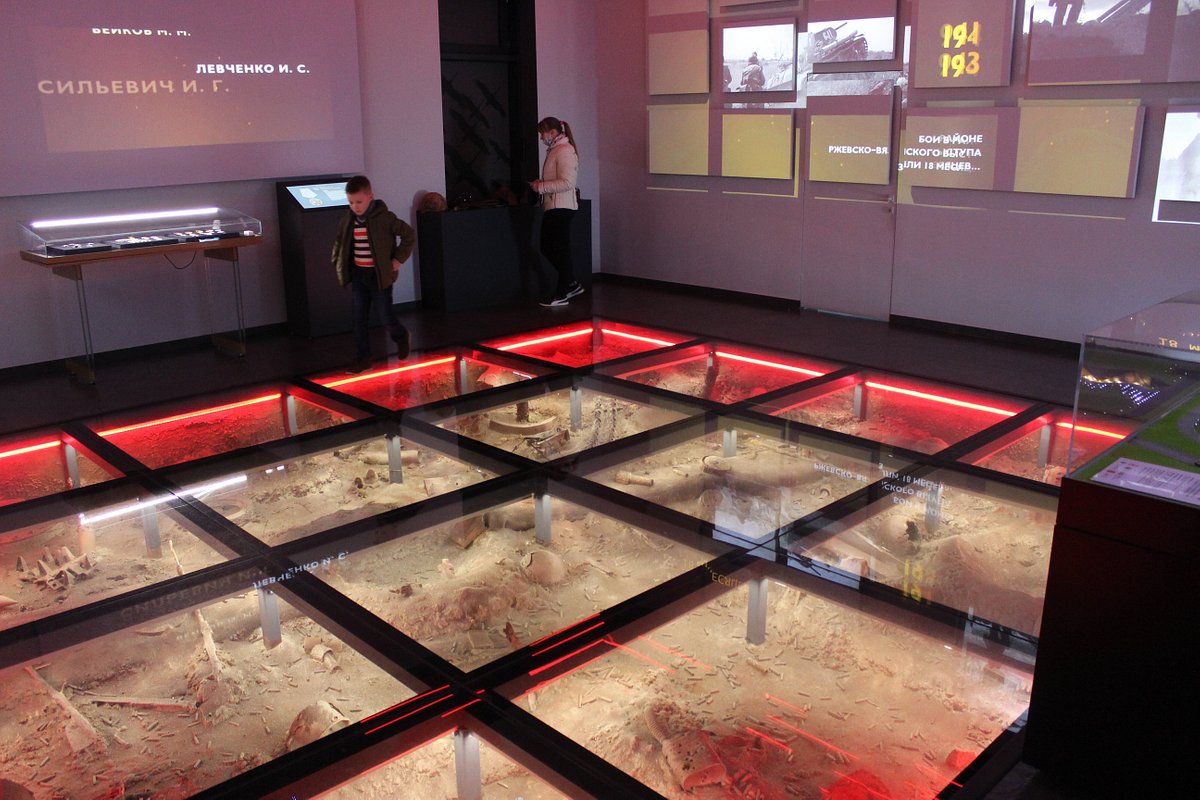
Useful information
Official website of the attraction: https://rzhev.histrf.ru/.
The memorial is open around the clock and has original sound and light decorations. In the evening and at night, when the lights are lit, the monument to the Soviet soldier looks especially beautiful and atmospheric.
.
The museum is open Tuesday through Sunday from 10:00 to 18:00, Monday is a day off. Entrance to the museum is free.
How to get there
Address: Russian Federation, Tver region, Rzhevsky district, village of Khoroshevo.
.You can get to the destination by own or rented vehicle, cab, bus, train or electric train. Although there is a railway line near the monument, but until 2021, visitors who wanted to come by train were only able to get to the rather remote stations “Rzhev” or “Muravyevo”, and then they had to find another mode of transportation.
.
In 2021, a new stop called “Rzhevsky Memorial” was built approximately in the middle of the section between the above-mentioned stations. From the Rzhevsky Memorial stop, visitors can walk to the monument or take a shuttle bus. The stop was opened on May 6, 2021, and the event was attended by Tver Region Governor Igor Rudenya and Russian Railways President Oleg Belozerov. From the same day, direct Lastochka flights from Moscow started running here.
Two flights depart daily from Moscow’s Riga station at 06:41 (train No. 7011) and 15:41 (train No. 7015), with travel times of 4 hrs. 59 min. and 4 h. 54 min. respectively. In the opposite direction “Swallows” depart from the Memorial to the Soviet Soldier at 05:47 (train No. 7022) and 15:53 (train No. 7024), the travel time is 4 hrs. 48 min. and 4 h. 42 min. The trains stop at several stations and their schedules are designed to allow connections with other public transportation. .From the metro station “Rechnoi Vokzal” there is a bus Moscow – Rzhev. Upon arrival in the city, you need to take bus number 15 and go to the station “Gardens”, and then a small section of the road to walk. You can also get to the memorial complex by car on the highway M-9. You need to drive to the turn to Khoroshevo.
.